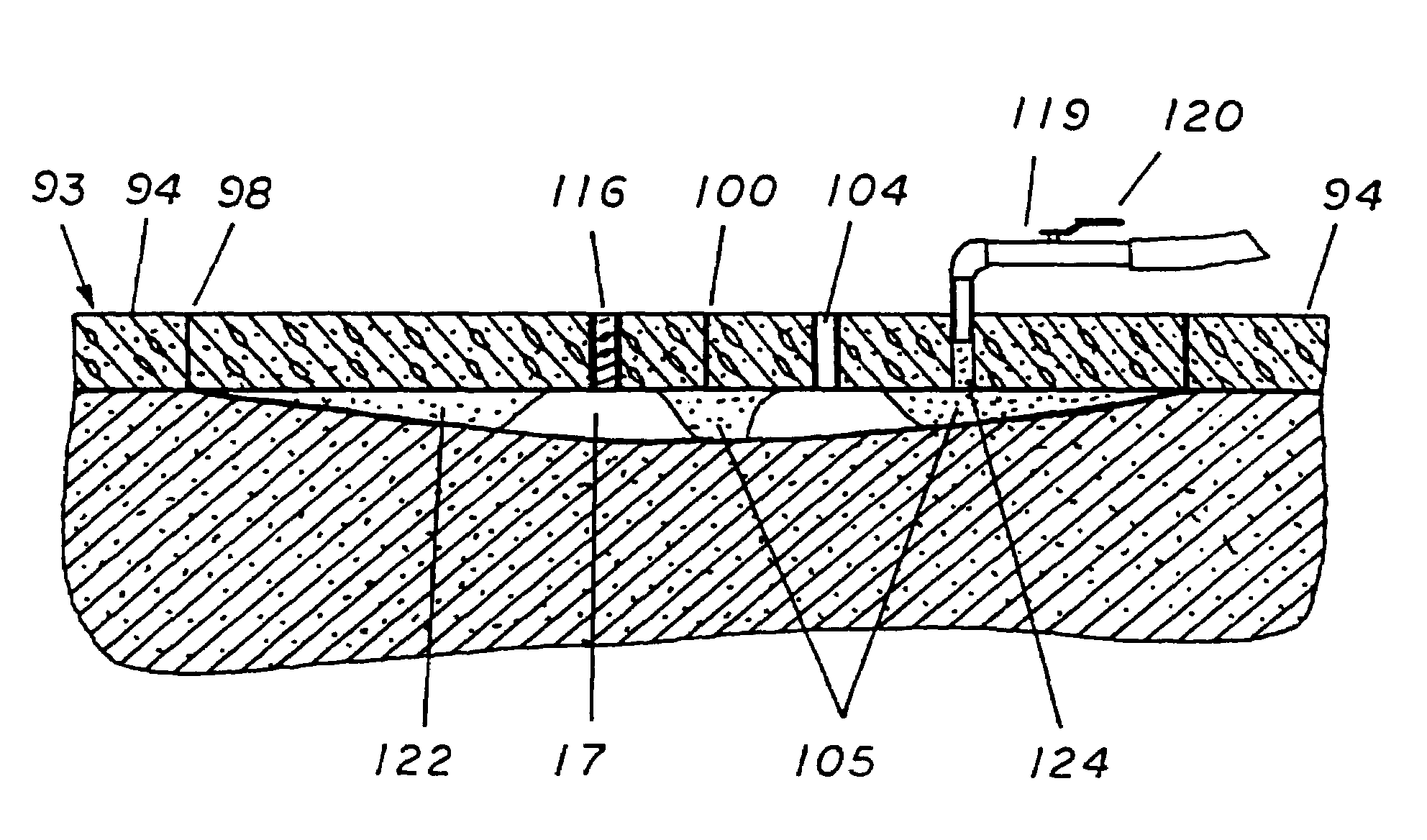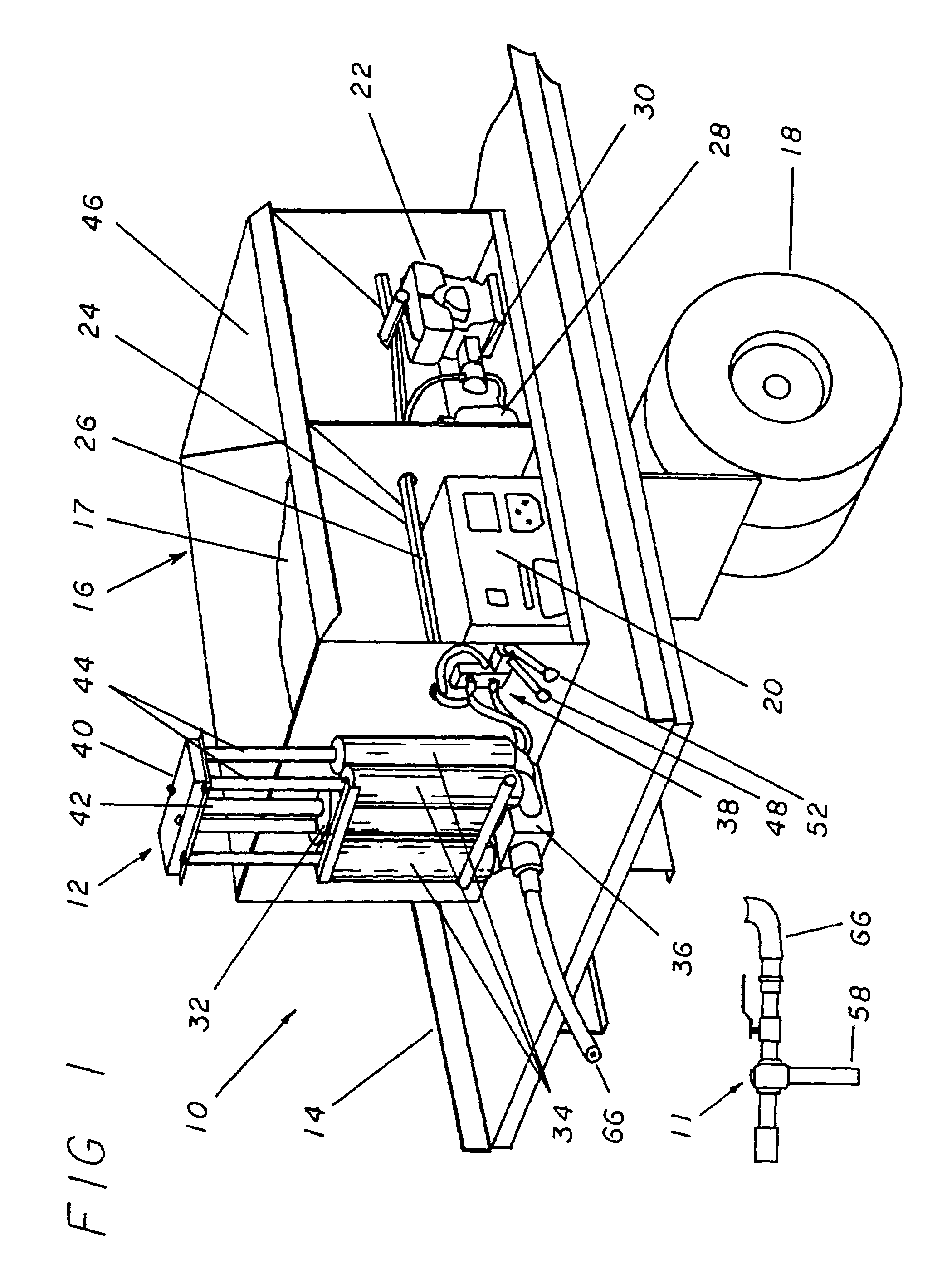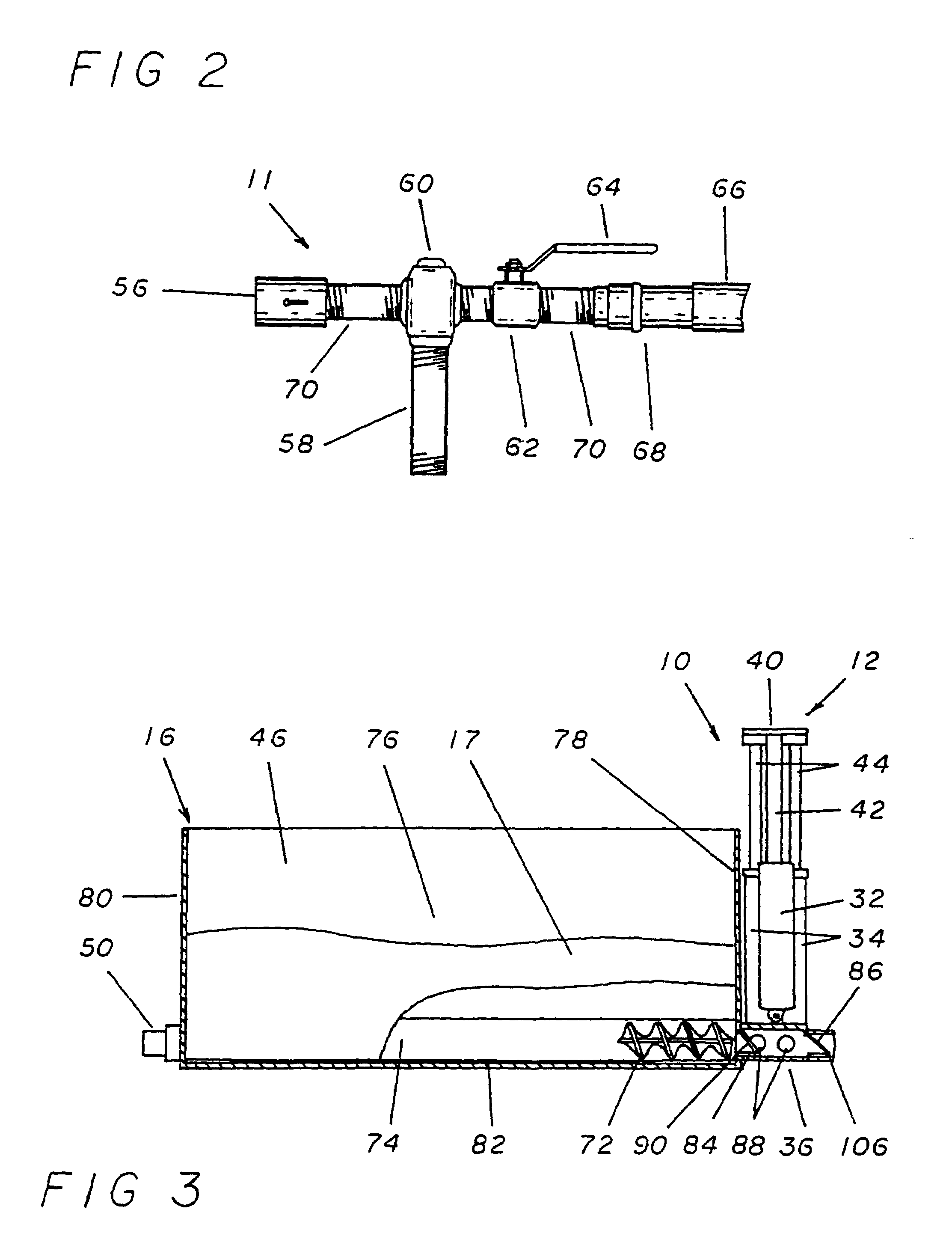Method of repairing damaged concrete slabs
- Summary
- Abstract
- Description
- Claims
- Application Information
AI Technical Summary
Benefits of technology
Problems solved by technology
Method used
Image
Examples
Embodiment Construction
[0029]Referring now to the drawings, and more specifically to FIG. 1, the present invention is employed to repair concrete slabs by making use of a plurality of devices to introduce lime sludge 17 in the desired location. The first of these is a slab lift pump apparatus 10 which is a self contained portable device that is employed to pump at pressure the lime sludge 17 through the connected tool hose 66. The portable aspect of the slab lift pump apparatus 10 is accomplished by placing its components on a flatbed 14 vehicle that is equipped with a set of wheels 18 such as a truck or trailer. Additionally, all of the components of the slab lift pump apparatus 10 that are necessary for its operation are contained on the surface of the flatbed 14 which allows it to be quickly moved from site to site and to operate completely independently.
[0030]The slab lift pump apparatus 10 is made up of a large open topped fill container 16 within which the lime sludge 17 that is used to elevate the ...
PUM
 Login to View More
Login to View More Abstract
Description
Claims
Application Information
 Login to View More
Login to View More - R&D
- Intellectual Property
- Life Sciences
- Materials
- Tech Scout
- Unparalleled Data Quality
- Higher Quality Content
- 60% Fewer Hallucinations
Browse by: Latest US Patents, China's latest patents, Technical Efficacy Thesaurus, Application Domain, Technology Topic, Popular Technical Reports.
© 2025 PatSnap. All rights reserved.Legal|Privacy policy|Modern Slavery Act Transparency Statement|Sitemap|About US| Contact US: help@patsnap.com



